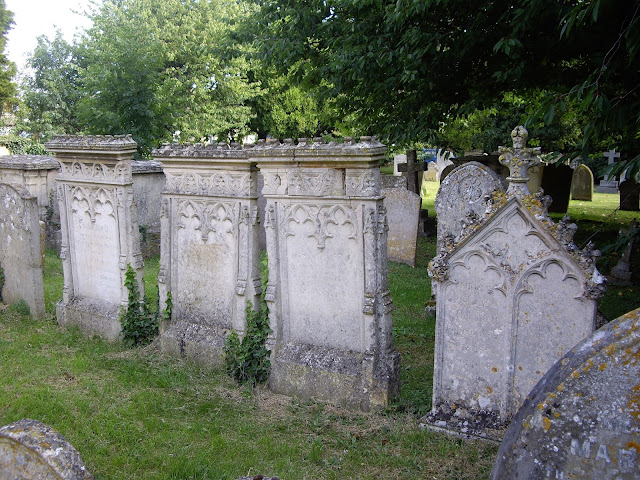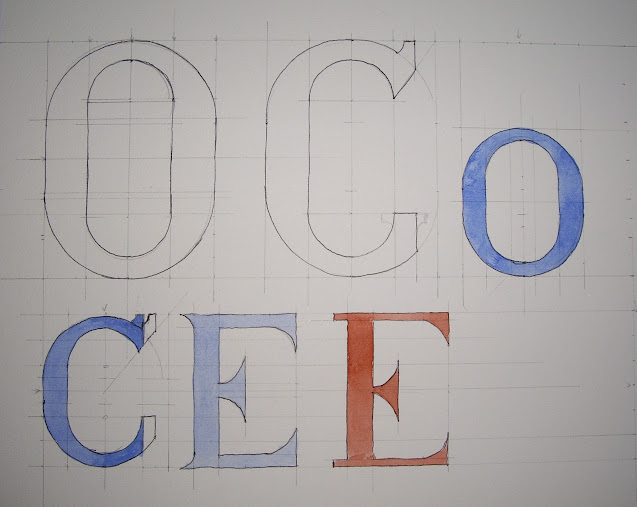Tuesday, 27 August 2013
St John The Baptist, Baston
I took these following photographs last week when I went exploring/sketching to Baston. The church is quite small with a Victorian chancel and a smart late Gothic west tower. The most interesting feature - most picturesque that is - is the west end of the south aisle, and the porch. The graveyard contains some interesting, (and in one case unique?) 19th century tombstones.
Wednesday, 14 August 2013
St Firmin, Thurlby
I went sketching this morning, to St Firmin's church, Thurlby. I took a number of shots of both the exterior and interior to help me decide how to approach a 'finished' watercolour of the church. Although they are really for my reference, I thought I'd share the best with you. St Firmin's is small but picturesque church; the architecture being full of incident and texture. It sits almost on the fen edge on the eastern fringe of the village. The western boundary of the churchyard is the Carr Dyke, a Roman drainage channel (no longer thought to be a canal) that runs along the western edge of the Fens. The lovely planting around the church means that only substantive views of the church are from the south and east. The church is dedicated, for those who wondering who St Firmin was, to a Gallo-Roman bishop from Amiens.
Labels:
architecture,
churches,
Limestone Belt,
Lincolnshire,
Thurlby
Tuesday, 13 August 2013
Life Drawing
Last year I attended a course of Life Drawing at the Arts Centre in Stamford. Here are couple of drawings from that course for your delectation and delight. Hopefully.
Wednesday, 7 August 2013
Lettering
I'm quite fascinated by lettering and have periodically made various attempts at lettering. Here, for instance, is a font that I have been working on in the last few days. The initial inspiration for the lettering below came from reading that John Piper - an artists whose work I greatly, but not always, love - used lettering he found for his graphic work. By found I mean in this case the lettering he found on gravestones. I went to Bourne Abbey and took some rubbings from the slate tombstones there. The variety was quite amazing. It was all so beautifully cut. Even on one stone you might find at least three styles of lettering used. The initial design is for the sans serif 'e' directly inspired by the 'V' cut lettering I found.
Labels:
Bourne,
Bourne Abbey Church,
John Piper,
Lettering,
Lincolnshire,
Own work
Tuesday, 6 August 2013
Stamford Baroque I
I went to Stamford last Friday in search of the Baroque. My first selection are united by the use of the Mannerist/Baroque 'Giant Order', here in the form of rusticated pilasters, a particularly French motif known as a chainage. Though in the first example the direct influence is Vanbrugh's work nearby at Grimsthorpe Castle.
Labels:
architecture,
Baroque,
Limestone Belt,
Lincolnshire,
Stamford
Saturday, 3 August 2013
Sir Albert Richardson PRA (1880 - 1964)
September's issue of 'World of Interiors' has a interesting feature on the home of Sir Albert Richardson, in the English market town of Ampthill, Bedfordshire. Sharp eyed readers will recall he added a wing, or two, to Anglesey Abbey for Lord Fairhaven - did I tell you the bf now works there? Sir Albert, or 'The Professor', was a leading 20th century classical architect in Britain. He was also professor of architecture at the Royal Academy - hence the nickname. He was also an eccentric (occasionally wearing powdered wigs and riding around Ampthill in a sedan chair), and an avid collector with a real eye. His house, a large red-brick Georgian townhouse is stuffed full of lovely things. Queen Mary, and John Fowler (of 'Colefax and Fowler') were appreciative visitors. As the interior has not been re-decorated for decades it is wonderfully illustrative of a type of mid-century English taste - one I'm very comfortable with, though personally I prefer a stronger colour palette in the manner of David Hicks. Richardson said of the house: "My house is my yardstick! [ ] It is my measuring scale by which I contemplate the past and assess the future." He certainly excluded, as far as possible, rapacious modernity. It is striking that there are, as far as I can tell, no twentieth century artists represented on the walls, not even artists such as Maur Griggs, Meredith Frampton, Laura Knight or Edward Seago who I would have thought would pass muster. There is a similarity in that rejection of the modern world with the subject of another article in September IoW, George Upwell, the Norfolk potter. Not at all a similarity at first apparent.
As with all things, the collection and the other contents of the house are now to be auctioned (the WoI article makes for a fine record of Sir Albert's domestic achievement). There are two sales. The first, the 'Collection', in September will be at Christies in London (King St, September 17th & 18th); the second, the 'Residual sale', will be in November (Nov 14th) at Cheffins in Cambridge.
As with all things, the collection and the other contents of the house are now to be auctioned (the WoI article makes for a fine record of Sir Albert's domestic achievement). There are two sales. The first, the 'Collection', in September will be at Christies in London (King St, September 17th & 18th); the second, the 'Residual sale', will be in November (Nov 14th) at Cheffins in Cambridge.
Subscribe to:
Comments (Atom)




























